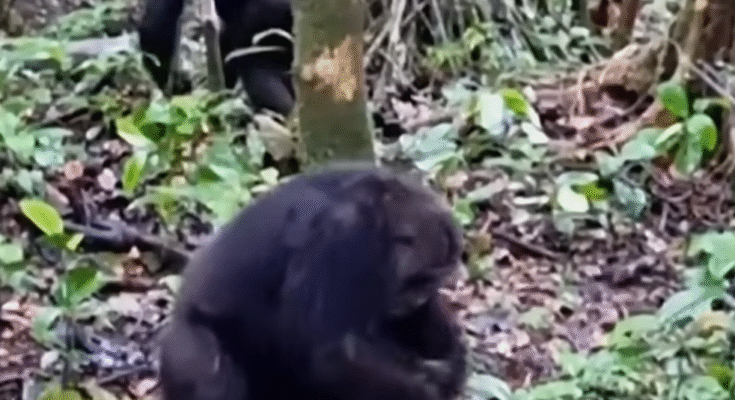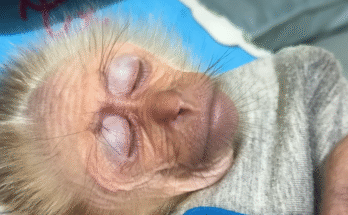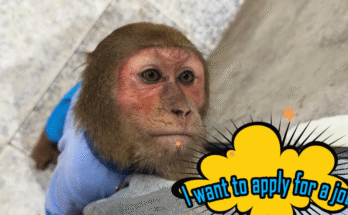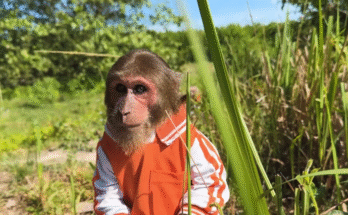Deep within the dense forests of Africa, where the canopy is alive with birdsong and the air hums with the rhythm of nature, a dramatic and heartbreaking scene unfolds. A group of chimpanzees—intelligent, social, and strong—moves quietly through the trees. Their eyes are sharp, their gestures deliberate. Among them is a powerful male, the leader of the troop. He spots movement below: a small monkey foraging innocently on the forest floor. What happens next is a reminder that even in the most beautiful corners of nature, life and death are deeply intertwined.
The Calm Before the Tragedy
That morning, the forest was peaceful. Sunlight streamed through the leaves, and the sounds of insects blended with the distant calls of monkeys. A young red colobus monkey had wandered slightly away from its group, hopping from branch to branch in search of tender leaves. It was small, playful, and unaware of the danger lurking nearby.
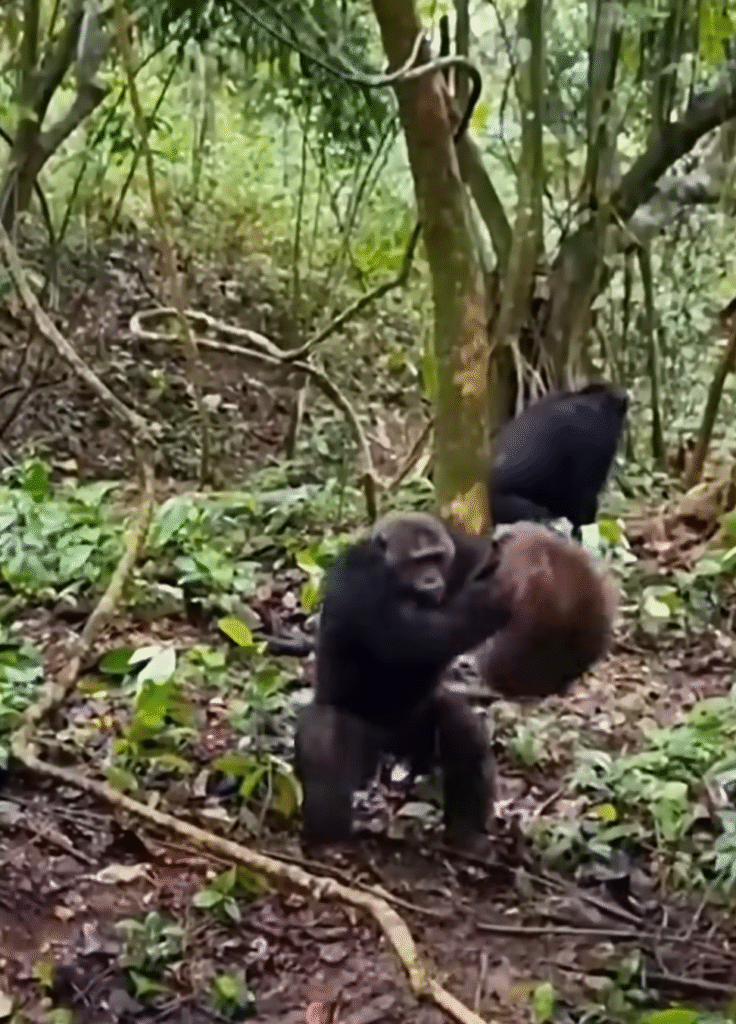
Chimpanzees are known to eat fruit and plants, but they are also skilled hunters. When food is scarce, or when their instincts are triggered, they can form hunting groups and pursue smaller monkeys. This behavior, while shocking to many who see chimpanzees as gentle and human-like, is part of their survival strategy.
The young monkey’s soft chirps caught the attention of the chimpanzees resting in the trees. Their leader, a dominant male named Karo, froze and tilted his head. His dark eyes narrowed. He made a short grunt—a signal that the others understood. Within seconds, the troop began to move silently and strategically, surrounding the area.
The Chase Begins
The monkey sensed something was wrong. It paused, looked around, and its tail flicked nervously. Suddenly, a branch cracked above. The sound echoed like thunder in the forest. The monkey bolted—leaping through the trees as fast as it could.
But the chimpanzees were faster. They moved like shadows, powerful arms swinging from branch to branch. Their coordination was terrifyingly perfect. One chimpanzee cut off the monkey’s escape route, another blocked the next tree. Within moments, the tiny monkey was trapped.
Karo made the final leap. With one powerful swing, he grabbed the monkey by the tail. The forest erupted with high-pitched screams—fear from the monkey, excitement from the chimps. The struggle was short. Karo’s strength was unmatched. The forest fell silent again.
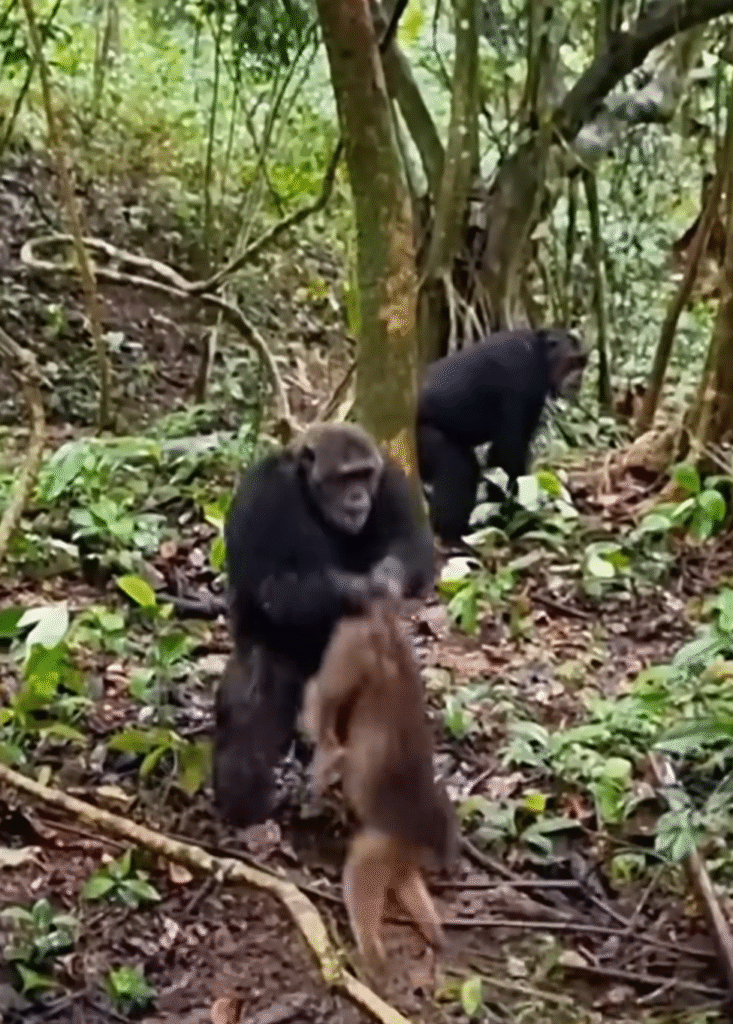
A Moment of Silence
After the kill, the group gathered around. Some chimpanzees reached out to touch the small body. For a brief moment, there was quiet respect—or perhaps curiosity. It was not just an act of hunger but also dominance. In the wild, chimpanzees use hunting as a way to strengthen bonds within the group. They share the meat, reward cooperation, and reinforce hierarchy.
Karo sat with the body in his hands. His face showed no emotion, yet there was a strange intensity in his eyes. He called softly to the others, and soon they began to divide the meal. It was brutal but natural—a reminder that in the animal kingdom, survival often comes at the cost of another life.
The Watching Eyes
High above in the trees, another group of monkeys watched silently. They had seen everything—the chase, the screams, the end. The older ones called out mournfully, their cries echoing through the forest. The young ones clung to their mothers, trembling in fear.
It was a scene that repeated itself many times in nature, but it never became easier to witness. The bond between these animals—the predator and the prey—was ancient and cruelly balanced. Every life fed another, every death gave life to someone else.
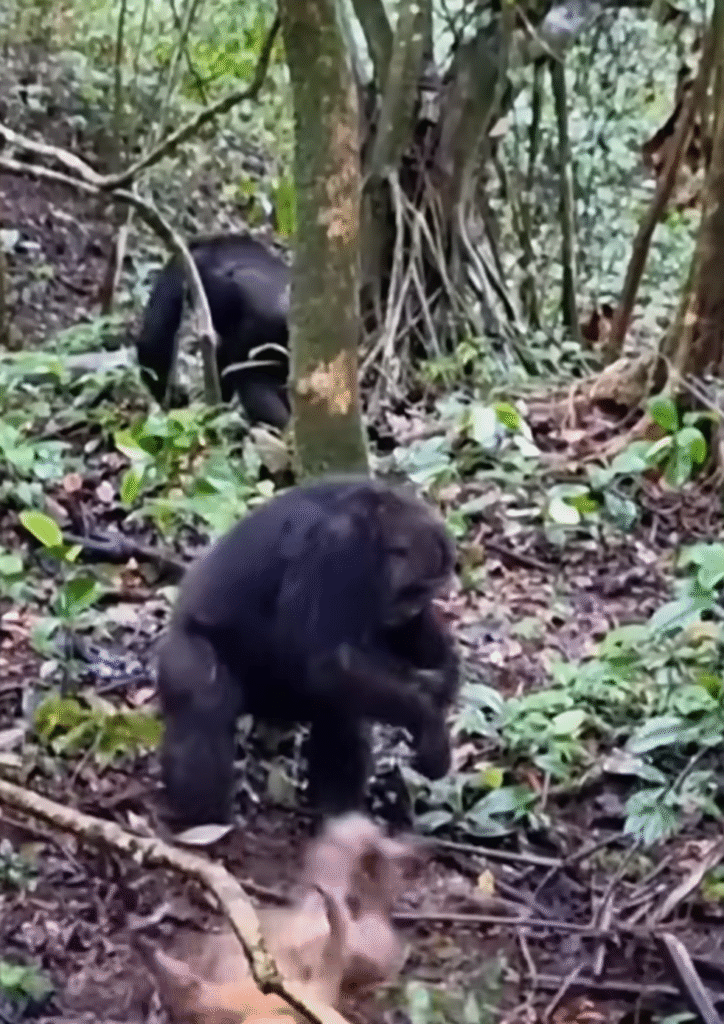
The Circle of Life
Researchers who study chimpanzees often record these hunts to understand their intelligence and social structure. While it may look violent, it shows how deeply complex chimpanzees are. They plan, cooperate, and even celebrate success—traits that are eerily similar to humans.
In one famous study in Tanzania, scientists observed chimpanzees hunting colobus monkeys in groups. Each chimp had a role: blockers, chasers, and the final catcher. When the hunt succeeded, they shared the meat, building alliances within the troop. Those who helped most received the best parts of the meal, while the weaker ones waited for scraps.
This behavior also shows something important: chimpanzees understand teamwork and reward. They know how to plan ahead, how to wait, and when to strike. Their intelligence, while fascinating, also makes their aggression more chilling.
The Human Connection
When humans see such events, it can be hard to accept. We often think of chimpanzees as our gentle relatives—playful, loving, and emotional. Yet moments like these remind us that they also carry the wild instincts of survival, just as our ancestors once did.
Some scientists believe that by studying chimpanzees, we learn about the darker side of human evolution—the instincts that shaped our ability to hunt, plan, and dominate. Others see it as a lesson in humility: nature is not kind or cruel; it is simply balanced.
In that forest, as Karo and his troop finished their meal, the world continued. Birds still sang. Leaves still rustled. Life moved on, as it always does.
The Aftermath
By afternoon, the chimpanzees had dispersed. Some played in the trees, grooming one another as if nothing had happened. But in the branches nearby, the remaining monkeys stayed hidden and silent. They had lost one of their own, and for the next few days, their group stayed cautious, avoiding the area where the tragedy occurred.
Karo, the leader, sat on a thick branch watching over his troop. His hands still carried traces of the hunt, but his focus had already shifted. For him, it was a success—proof of strength and leadership. The younger chimpanzees looked up to him with admiration. They had learned a lesson that day: in the wild, strength means survival.
A Lesson from the Forest
The story of the chimpanzee and the monkey is not just about violence—it is about the raw truth of nature. Every creature, big or small, plays a role in the circle of life. The monkey’s death provided food and strength for others, just as fallen leaves feed the soil that gives birth to new trees.
To human eyes, it might seem cruel. But in the wild, there are no villains, only survivors. The forest lives on this balance—each life feeding another, each day a struggle between hunger and safety.
Reflection
When we see chimpanzees hunt, it reminds us that intelligence and emotion do not erase instinct. Even the gentlest creatures can become fierce when survival demands it. Yet, this also teaches us to appreciate the fragile beauty of life.
Every sunrise in the jungle begins with peace and ends with uncertainty. Every creature fights for one more day. And while one story may end in sorrow, another begins in hope.
As night fell over the forest, the cries of the monkeys faded into the distance. The moon rose above the treetops, casting silver light over the quiet leaves. Somewhere, another baby monkey clung to its mother, safe for now. The cycle of life continued—both beautiful and unforgiving, as it has for millions of years.
